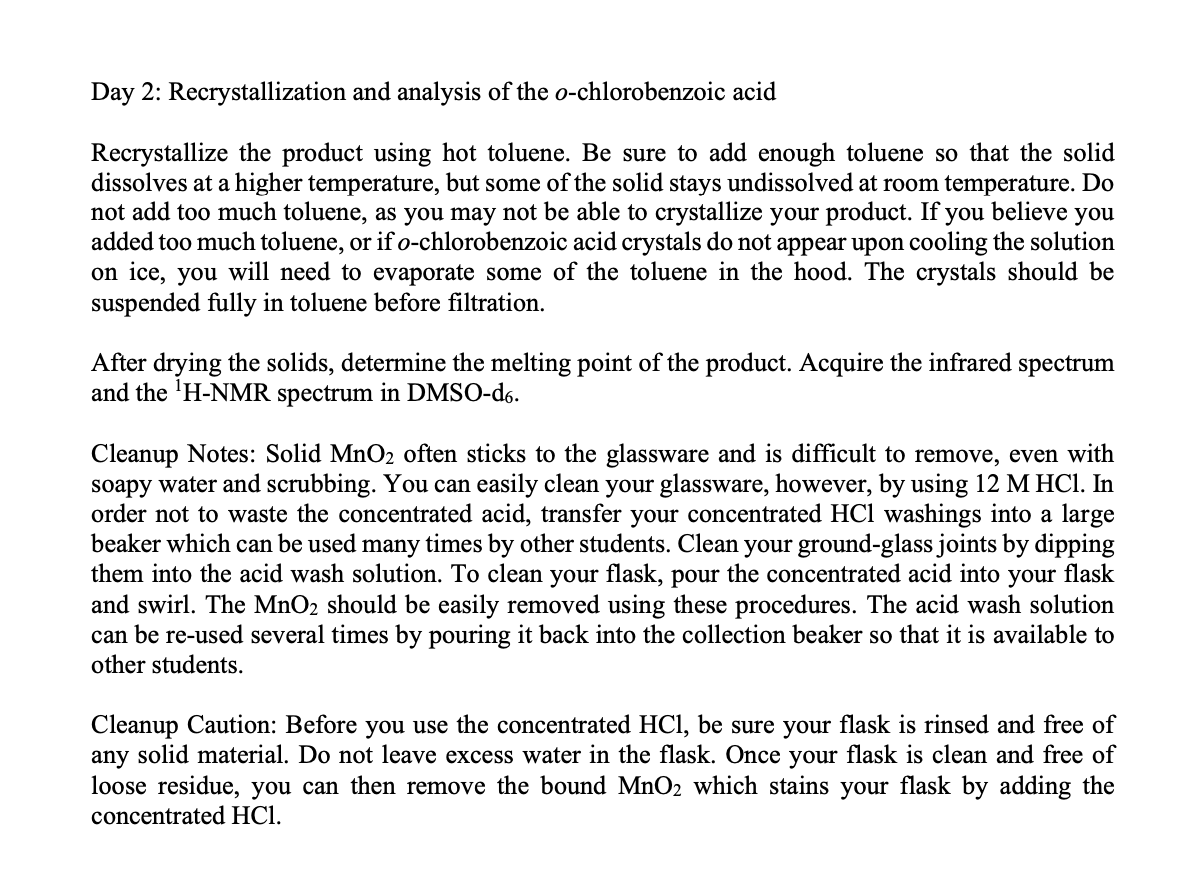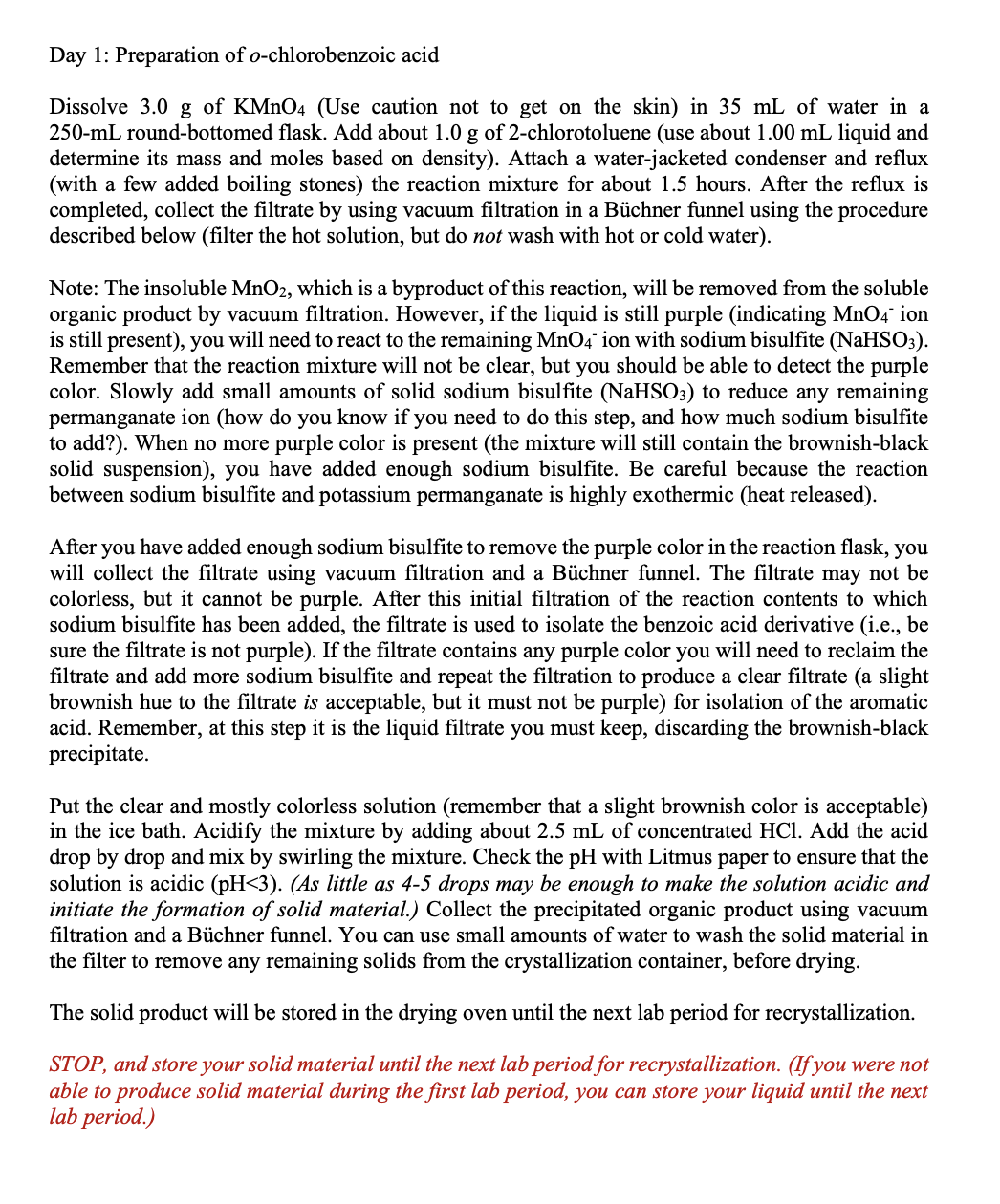1HNMR spectrum from the literature table labeled diagram chemical shift (literature), multiplet structure, integration, assignment please all in table based on the data in the lab FOR EXAMPLE NO Chemical shift experimental multiplet Integration Assignment 1 7.45 ppm Triplet 1 Para to Cl 2 7.55 ppm Triplet 1 Meta to Cl 3 7.56 ppm Doublet 1 Ortho to Cl 4 7.81 ppm Doublet 1 Ortho to Cl 5 13.43 ppm Singlet 1 -COOH
1HNMR spectrum from the literature table labeled diagram chemical shift (literature), multiplet structure, integration, assignment please all in table based on the data in the lab FOR EXAMPLE NO Chemical shift experimental multiplet Integration Assignment 1 7.45 ppm Triplet 1 Para to Cl 2 7.55 ppm Triplet 1 Meta to Cl 3 7.56 ppm Doublet 1 Ortho to Cl 4 7.81 ppm Doublet 1 Ortho to Cl 5 13.43 ppm Singlet 1 -COOH
Chapter31: Synthetic Polymers
Section31.SE: Something Extra
Problem 28AP
Related questions
Question
1HNMR spectrum from the literature table
labeled diagram chemical shift (literature), multiplet structure, integration, assignment please all in table based on the data in the lab
FOR EXAMPLE
|
NO |
Chemical shift experimental |
multiplet |
Integration |
Assignment |
|
1 |
7.45 ppm |
Triplet |
1 |
Para to Cl |
|
2 |
7.55 ppm |
Triplet |
1 |
Meta to Cl |
|
3 |
7.56 ppm |
Doublet |
1 |
Ortho to Cl |
|
4 |
7.81 ppm |
Doublet |
1 |
Ortho to Cl |
|
5 |
13.43 ppm |
Singlet |
1 |
-COOH |

Transcribed Image Text:Day 2: Recrystallization and analysis of the o-chlorobenzoic acid
Recrystallize the product using hot toluene. Be sure to add enough toluene so that the solid
dissolves at a higher temperature, but some of the solid stays undissolved at room temperature. Do
not add too much toluene, as you may not be able to crystallize your product. If you believe you
added too much toluene, or if o-chlorobenzoic acid crystals do not appear upon cooling the solution
on ice, you will need to evaporate some of the toluene in the hood. The crystals should be
suspended fully in toluene before filtration.
After drying the solids, determine the melting point of the product. Acquire the infrared spectrum
and the 'H-NMR spectrum in DMSO-d6.
Cleanup Notes: Solid MnO2 often sticks to the glassware and is difficult to remove, even with
soapy water and scrubbing. You can easily clean your glassware, however, by using 12 M HCI. In
order not to waste the concentrated acid, transfer your concentrated HCl washings into a large
beaker which can be used many times by other students. Clean your ground-glass joints by dipping
them into the acid wash solution. To clean your flask, pour the concentrated acid into your flask
and swirl. The MnO2 should be easily removed using these procedures. The acid wash solution
can be re-used several times by pouring it back into the collection beaker so that it is available to
other students.
Cleanup Caution: Before you use the concentrated HCl, be sure your flask is rinsed and free of
any solid material. Do not leave excess water in the flask. Once your flask is clean and free of
loose residue, you can then remove the bound MnO2 which stains your flask by adding the
concentrated HCl.

Transcribed Image Text:Day 1: Preparation of o-chlorobenzoic acid
Dissolve 3.0 g of KMNO4 (Use caution not to get on the skin) in 35 mL of water in a
250-mL round-bottomed flask. Add about 1.0 g of 2-chlorotoluene (use about 1.00 mL liquid and
determine its mass and moles based on density). Attach a water-jacketed condenser and reflux
(with a few added boiling stones) the reaction mixture for about 1.5 hours. After the reflux is
completed, collect the filtrate by using vacuum filtration in a Büchner funnel using the procedure
described below (filter the hot solution, but do not wash with hot or cold water).
Note: The insoluble MnO2, which is a byproduct of this reaction, will be removed from the soluble
organic product by vacuum filtration. However, if the liquid is still purple (indicating MnO4 ion
is still present), you will need to react to the remaining MnO4 ion with sodium bisulfite (NaHSO3).
Remember that the reaction mixture will not be clear, but you should be able to detect the purple
color. Slowly add small amounts of solid sodium bisulfite (NaHSO3) to reduce any remaining
permanganate ion (how do you know if you need to do this step, and how much sodium bisulfite
to add?). When no more purple color is present (the mixture will still contain the brownish-black
solid suspension), you have added enough sodium bisulfite. Be careful because the reaction
between sodium bisulfite and potassium permanganate is highly exothermic (heat released).
After you have added enough sodium bisulfite to remove the purple color in the reaction flask, you
will collect the filtrate using vacuum filtration and a Büchner funnel. The filtrate may not be
colorless, but it cannot be purple. After this initial filtration of the reaction contents to which
sodium bisulfite has been added, the filtrate is used to isolate the benzoic acid derivative (i.e., be
sure the filtrate is not purple). If the filtrate contains any purple color you will need to reclaim the
filtrate and add more sodium bisulfite and repeat the filtration to produce a clear filtrate (a slight
brownish hue to the filtrate is acceptable, but it must not be purple) for isolation of the aromatic
acid. Remember, at this step it is the liquid filtrate you must keep, discarding the brownish-black
precipitate.
Put the clear and mostly colorless solution (remember that a slight brownish color is acceptable)
in the ice bath. Acidify the mixture by adding about 2.5 mL of concentrated HCl. Add the acid
drop by drop and mix by swirling the mixture. Check the pH with Litmus paper to ensure that the
solution is acidic (pH<3). (As little as 4-5 drops may be enough to make the solution acidic and
initiate the formation of solid material.) Collect the precipitated organic product using vacuum
filtration and a Büchner funnel. You can use small amounts of water to wash the solid material in
the filter to remove any remaining solids from the crystallization container, before drying.
The solid product will be stored in the drying oven until the next lab period for recrystallization.
STOP, and store your solid material until the next lab period for recrystallization. (If you were not
able to produce solid material during the first lab period, you can store your liquid until the next
lab period.)
Expert Solution
This question has been solved!
Explore an expertly crafted, step-by-step solution for a thorough understanding of key concepts.
This is a popular solution!
Trending now
This is a popular solution!
Step by step
Solved in 2 steps with 2 images

Recommended textbooks for you

